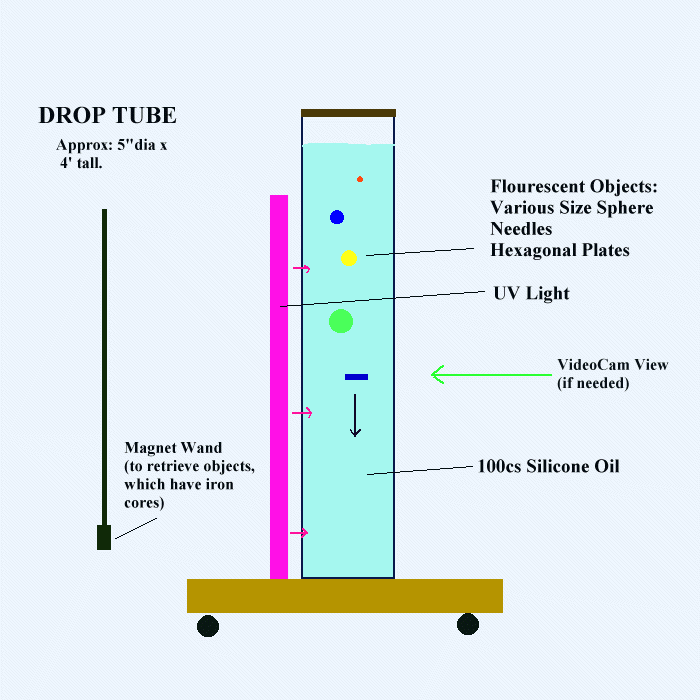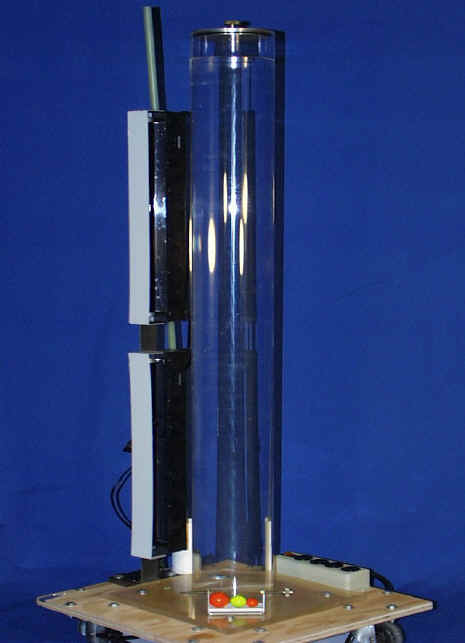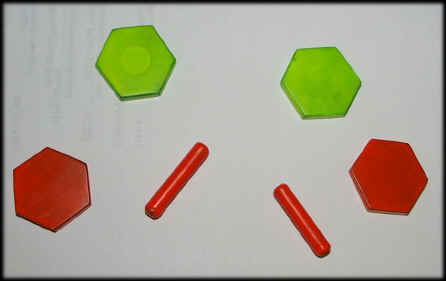
DROP TUBE: SHOW TERMINAL VELOCITY VS. SIZE, ORIENTATION OF PLATES IN FREE FALL....
THIS FACILITY USES VISCOUS (100 CENTISTOKE) SILICONE OIL IN A CYLINDER TO ILLUSTRATE LOW REYNOLDS NUMBER FREE FALL OF PARTICLES OF VARIOUS SHAPES.
The objects have steel cores so that the may be retrieved from the oil with a magnetic wand. This eliminates much (but not all) of the potential for oily messes. It is best to only do one run - retrieving in class is not recommended.

The cart should be left capped and wheeled into the classroom. Large classrooms will require a video link using the VideoCam. All the spheres and model ice crystals (below) are coated with fluorescent paint. Turn on the UV illumination and darken the room. When using the video camera this lighting allows you to turn down the room lights and better see the screen onto which the video image may be projected.
Open the lid and drop several spheres of different sizes simultaneously. Their fall speeds increase with radius (because volume, or mass, increases faster than area, or friction, as the radius increases). This causes them to separate.
Alternatively, drop the model crystals at arbitrary (or unfavorable orientations) and see how the align during the fall. In a large class it best to have a TA run the video cam to follow what happens from the top down.

Photograph of the apparatus (above).

Advanced classes might be interested in computing the free-fall Reynolds number
Re ~ U(cm/sec) D(cm)/viscosity (Stokes = Centistokes / 100 ~ 1 cm2 / sec for the oil).
where U is the estimate fall speed and D the size of the object. How does this compare with the Reynolds number for particles falling in air (the viscosity of air is 0.1 Stokes)? If the Reynolds numbers are similar the drop tube is a pretty good model for what happens in nature.
QT MOVIE OF SPHERES OF DIFFERENT DIAMETER MOVING DOWN THE TUBE
Notes:
©2000. John Hart, University of Colorado